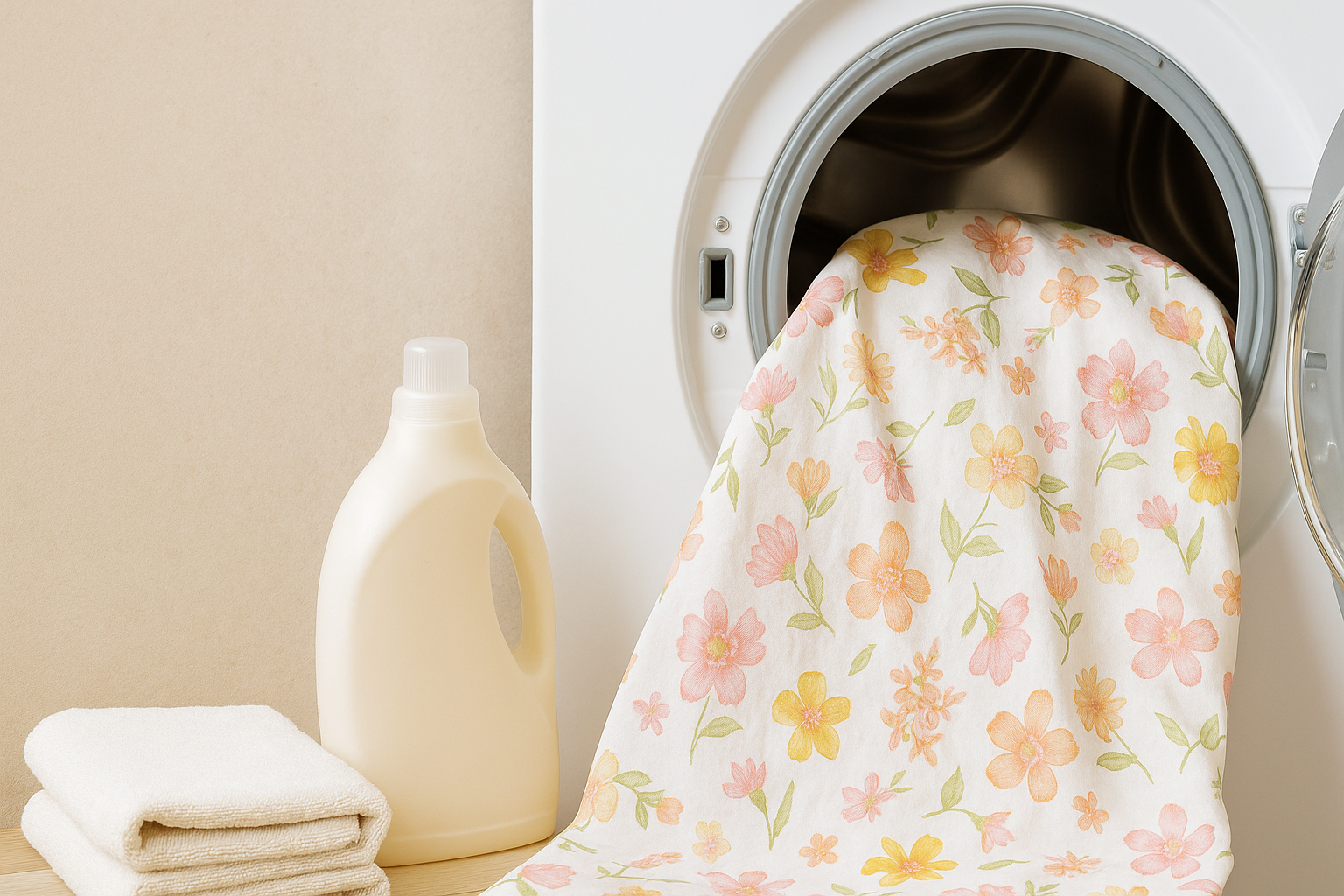Investing in 100% cotton bedding is one of the best decisions you can make for your home. Soft, breathable, and naturally hypoallergenic, cotton sheets, duvet covers, and pillowcases provide unmatched comfort for restful sleep. But to keep your bedding looking fresh and lasting for years, proper care is essential. Unlike synthetic fabrics, cotton requires thoughtful washing and maintenance to preserve its softness, color, and durability.
Here’s a practical guide on how to care for your cotton bedding the right way.
1. Read the Care Label First
Before washing, always check the label on your bedding. While most 100% cotton sheets are machine-washable, some might require specific care—like gentle cycles or cooler temperatures. The manufacturer’s instructions are tailored to the fabric weave and finish, so following them helps prolong the life of your bedding.
2. Wash in Cool or Warm Water
Cotton is durable, but hot water can cause shrinkage and weaken fibers over time. For best results:
-
Use cool or warm water (30–40°C / 85–105°F) for regular washing.
-
Save hot water cycles for deep cleaning or sanitizing when absolutely necessary.
Cooler washes are also better for color retention, especially with floral or patterned bedding.
3. Choose Gentle Detergents
Harsh detergents and bleach can strip cotton of its softness and fade colors. Opt for a mild, liquid detergent, ideally free from brighteners or strong chemicals. If you want extra freshness, add half a cup of baking soda to the wash—it helps neutralize odors without damaging the fibers.

4. Wash Separately or with Similar Fabrics
Cotton bedding should be washed separately from items like towels or clothing with zippers, which can cause pilling or tearing. If you’re short on laundry loads, at least wash bedding with other lightweight fabrics to reduce wear and friction.
5. Don’t Overload the Machine
Overstuffing the washing machine prevents sheets and duvet covers from getting properly cleaned and rinsed. It also causes unnecessary wrinkling. Give your bedding enough room to move around freely for the best results.
6. Drying: Low Heat is Key
Dryers are convenient, but high heat is cotton’s worst enemy. Excessive heat can cause shrinkage, weaken fibers, and set in wrinkles. To extend your bedding’s lifespan:
-
Use a low heat or air-dry setting in the dryer.
-
Remove bedding while it’s slightly damp and finish air-drying on a line or rack.
-
If air-drying outdoors, avoid direct sunlight for long periods—it can fade colors.
7. Reduce Wrinkles Naturally
Cotton wrinkles easily, but you don’t always need to iron. Here are simple ways to minimize creases:
-
Shake out sheets before drying to prevent deep wrinkles.
-
Fold or make the bed immediately after drying.
-
For a crisp hotel-like finish, lightly iron pillowcases or duvet covers with a warm iron.
8. Rotate Bedding Sets
To keep your cotton bedding in top condition, rotate between at least two or three sets. This reduces wear on any single set and gives you more time to properly wash and dry each one. It also keeps your bedroom feeling fresh with new looks and textures.
9. Spot Cleaning for Stains
Accidents happen, especially in family homes. For stains:
-
Act quickly. Blot (don’t rub) the area with a clean cloth.
-
Use a mild soap or baking soda paste for gentle stain removal.
-
Avoid bleach unless your bedding is pure white and bleach-safe.
10. Long-Term Storage Tips
When not in use, store your cotton bedding in a cool, dry place. Avoid plastic bags, which can trap moisture and cause mildew. Instead, use breathable cotton storage bags or a linen closet to keep your sheets fresh. A lavender sachet or cedar block can add a natural fragrance and keep pests away.
Conclusion
Caring for 100% cotton bedding doesn’t need to be complicated. By washing in cool water, choosing gentle detergents, drying on low heat, and giving your sheets proper breathing space, you can keep them soft, fresh, and beautiful for years to come. Cotton is a natural fiber that rewards you with comfort and durability—treat it well, and it will continue to give your family restful nights and cozy mornings.







